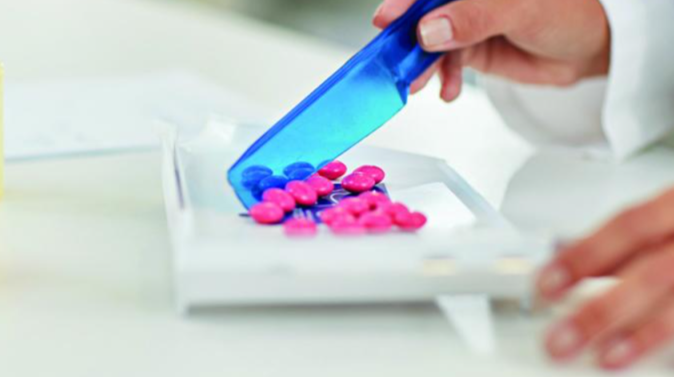For most health care workers, handling and administering potent prescription drugs is a regular part of their daily routine. While it’s beneficial to improving patient health, these drugs can pose a risk when released into the environment, potentially affecting about 8 million workers at healthcare facilities and compounding pharmacies in the United States alone. In response to employee concerns, the U.S. Pharmacopeia established a standard that drives the safe handling of hazardous drugs. Effective December 1, 2019, this standard is referred to as the USP General Chapter <800> standard, or simply USP <800>.
WHAT DRUGS ARE CONSIDERED HAZARDOUS, AND RELEVANT TO USP <800>?
USP <800> refers to a dynamic list of hazardous drugs (HDs) that has been established by the National Institute for Occupational Safety and Health (NIOSH), a scientific research and advisory branch of the United States Centers for Disease Control (CDC). The US Occupational Safety and Health Administration (OSHA), along with the individual State Boards of Pharmacy, provide regulatory guidance and enforcement of USP <800>.
The impetus behind USP <800> started in 1984, when NIOSH published the “Hazardous Drug Alert” warning of HD exposure risks to healthcare workers. A 2012 meningitis outbreak related to compounding issues at the New England Compounding Center, causing the death of over 100 patients, resulted in calls for increased regulatory oversight of drug compounding and administration.
The goal of USP <800> is to minimize the risk of unintended HD exposure to pharmacists, healthcare workers and patients at pharmacies and hospitals. This also includes the release of drugs into the environment where personnel and patients give and receive care.
HOW ARE COMPOUNDING PHARMACIES AFFECTED?
Compounding is the art and science of creating personalized medicine at doses to meet specific patient needs. However, when working with hazardous drugs, residue can enter the body from hand to mouth, through eyes, by breathing dust, or directly through the skin. Because the adverse effects of HDs can be chronic, severe, and cumulative, occupational exposure to even very low concentrations over an extended period of time can lead to very serious health conditions.
AIR AND SURFACE SAMPLING
Collecting and analyzing air samples to assess concentrations of airborne drugs is important. To verify whether there is a hazardous drug present in the air or as residue on surfaces, samples must be collected and shipped to a lab for analysis.
Surface sampling is a universal method used to assess the presence of hazardous drug residue on a surface. A surface sample is collected by swabbing the most commonly used or high risk surfaces in pharmacies and hospitals. This could include counters on which drugs are handled or dispensed, floors, IV poles, administration chairs, bathroom fixtures or any other surface in the compounding or administration suites.
Only specific labs have the technology and expertise to perform this type of analysis. These labs are typically accredited by the American Industrial Hygiene Association (AIHA LAP, LLC). An accredited lab with the corresponding technology and analytical methods can analyze your samples and provide data to support your USP <800> regulatory compliance program.
WHAT YOU CAN DO TO ASSESS AND MINIMIZE EXPOSURE
Bureau Veritas offers a comprehensive testing kit, ChemoAlert, which includes everything you need to collect a sample for lab analysis, with capability to test for up to 19 of the highest use hazardous drugs from a single swab. Sampling results identify if and where contamination exists, as well as the extent of this contamination. The information is then used to assess and improve HD handling and housekeeping procedures, fundamentally reducing the risk of exposure – the ultimate goal of USP <800>.
As the name implies, ChemoAlert is more tailored to detecting the presence of cancer drugs; however, Bureau Veritas has methods to test for over 1,000 drugs individually. Our AIHA LAP, LLC accredited lab has tested drug residue samples for renowned hospitals, infusion centers and pharmacies across the globe.
CONCERNED ABOUT HAZARDOUS DRUG CONTAMINATION?
Contact Bureau Veritas for assistance with your sampling plan or order a testing kit.





